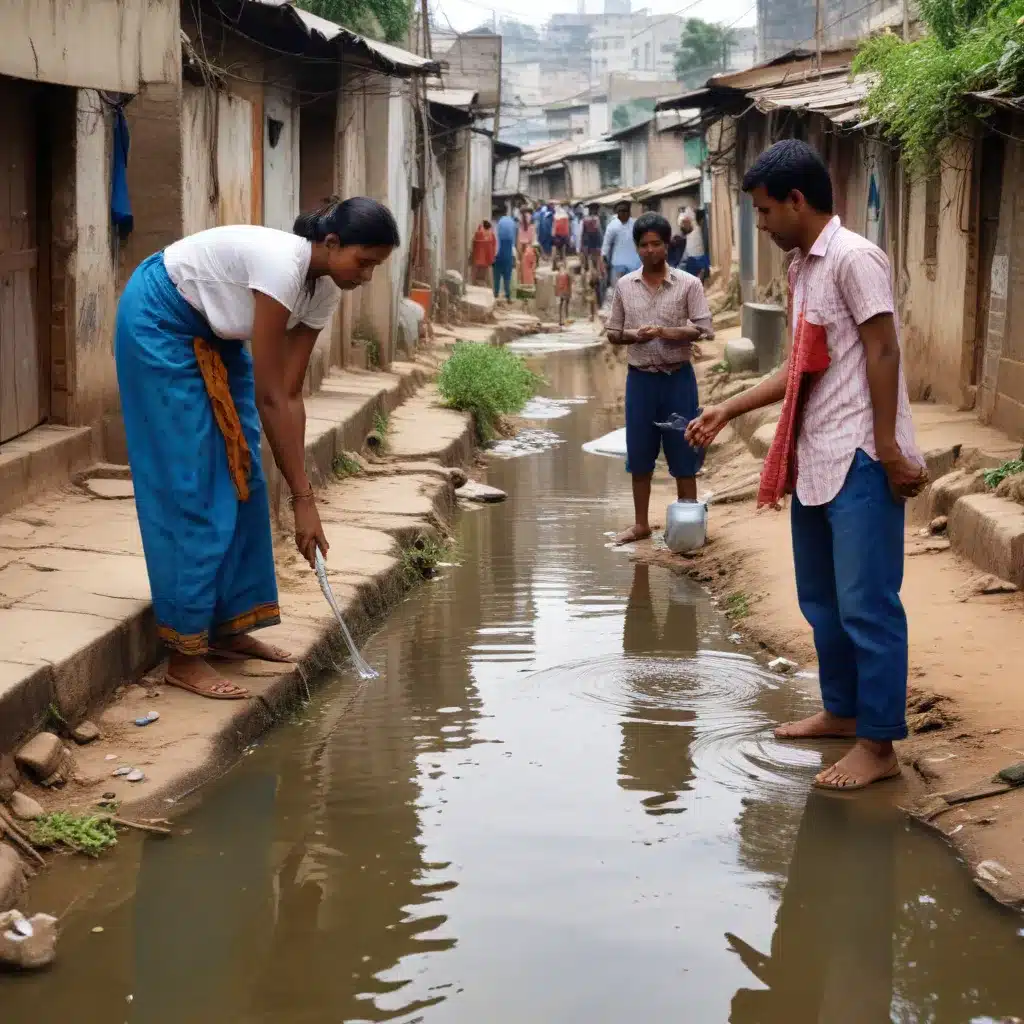
Empowering Communities to Safeguard their Water Resources
Hyderabad, the bustling capital of Telangana, faces a pressing challenge in ensuring safe and equitable access to water for all its inhabitants. While the city’s formal neighborhoods enjoy reliable water supply and sanitation services, the story is quite different in its sprawling informal settlements. Plagued by inadequate infrastructure, limited access to resources, and institutional barriers, these marginalized communities often struggle to secure their basic water and sanitation needs.
However, a promising approach is emerging that harnesses the power of citizen science to transform this grim reality. By engaging residents as active participants in water quality monitoring, community-based organizations (CBOs) and local authorities are working together to identify and address the root causes of water contamination in these underserved areas.
Understanding the Challenges in Hyderabad’s Informal Settlements
Hyderabad’s rapid urbanization has led to the proliferation of informal settlements, where an estimated 1.5 million people, or nearly a quarter of the city’s population, reside. These settlements, often located on the urban periphery or in environmentally fragile areas, lack access to basic services such as piped water supply, sewerage networks, and regular waste collection.
The consequences of this neglect are dire. Residents in these communities are forced to rely on contaminated groundwater, shallow wells, or illegal connections to the municipal water supply, exposing them to a range of waterborne diseases. Poor sanitation infrastructure, such as the lack of proper drainage and the prevalence of open defecation, further exacerbates the situation, leading to the contamination of both surface and groundwater sources.
Table 1: Water Quality Indicators in Hyderabad’s Informal Settlements
| Indicator | Formal Neighborhoods | Informal Settlements |
|---|---|---|
| Fecal Coliform (CFU/100ml) | 0-10 | 100-500 |
| Turbidity (NTU) | 2-5 | 10-50 |
| Nitrate (mg/L) | 5-10 | 20-50 |
The disparities in water quality between formal and informal neighborhoods are stark, as evident from the data in Table 1. Residents of informal settlements face significantly higher levels of fecal contamination, turbidity, and nitrate pollution, putting their health and well-being at risk.
Empowering Communities through Citizen Science
Recognizing the urgency of this issue, local civil society organizations have spearheaded a novel approach to water quality monitoring in Hyderabad’s informal settlements. By engaging residents as citizen scientists, they are not only gathering crucial data but also fostering a sense of ownership and empowerment within the community.
The process involves training community members to collect water samples, conduct basic tests, and record their findings. This hands-on approach not only equips residents with practical skills but also enables them to understand the complex interplay between water quality, sanitation, and their own health. As they witness the data firsthand, community members gain a deeper appreciation for the challenges they face and the importance of collective action.
“Initially, many people were skeptical about our ability to monitor water quality,” says Ravi, a resident of Banjara Hills informal settlement. “But as we started testing the water and seeing the results, it became clear that we had a serious problem on our hands. This motivated us to work with the local authorities to find solutions.”
Collaborative Efforts for Sustainable Change
The citizen science initiative has paved the way for a more collaborative approach to water quality management in Hyderabad’s informal settlements. By sharing their findings with local authorities, community members have been able to engage in constructive dialogues and jointly identify strategies to address the root causes of water contamination.
“The data collected by the citizen scientists has been instrumental in guiding our interventions,” explains Sushma, an official from the Hyderabad Metropolitan Water Supply and Sewerage Board (HMWSSB). “We have been able to target our investments in infrastructure upgrades, such as the installation of decentralized water treatment systems and the expansion of the sewerage network, to the areas of greatest need.”
Furthermore, the citizen science initiative has fostered a sense of shared responsibility, where residents take an active role in maintaining the integrity of their water sources. Community-based water quality monitoring committees have been established to regularly test water samples, report any issues, and work with local authorities to ensure the sustainability of these efforts.
Scaling Up for Greater Impact
The success of the citizen science approach in Hyderabad’s informal settlements has sparked interest from other cities across India, which are now exploring ways to replicate this model. By empowering communities to become active participants in water quality monitoring, these initiatives have the potential to drive transformative change in the way urban water resources are managed.
To facilitate this scaling up, civil society organizations and local authorities are working to develop comprehensive training programs, standardize water testing protocols, and establish robust data management systems. Additionally, they are advocating for policy changes that recognize the vital role of citizen science in water governance and provide the necessary institutional support and resources.
“Citizen science is not just about collecting data; it’s about building trust, fostering collaboration, and empowering communities to take ownership of their water resources,” says Neha, a program manager at a local non-governmental organization. “As we continue to scale up these efforts, we believe that we can create a more equitable and sustainable water future for all of Hyderabad’s residents.”
By embracing the power of citizen science, Hyderabad’s informal settlements are proving that community-driven initiatives can be a game-changer in the quest for universal access to safe water. As these models spread to other cities, the promise of a water-secure future for marginalized urban communities becomes increasingly within reach.

